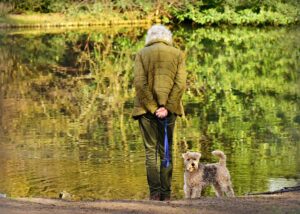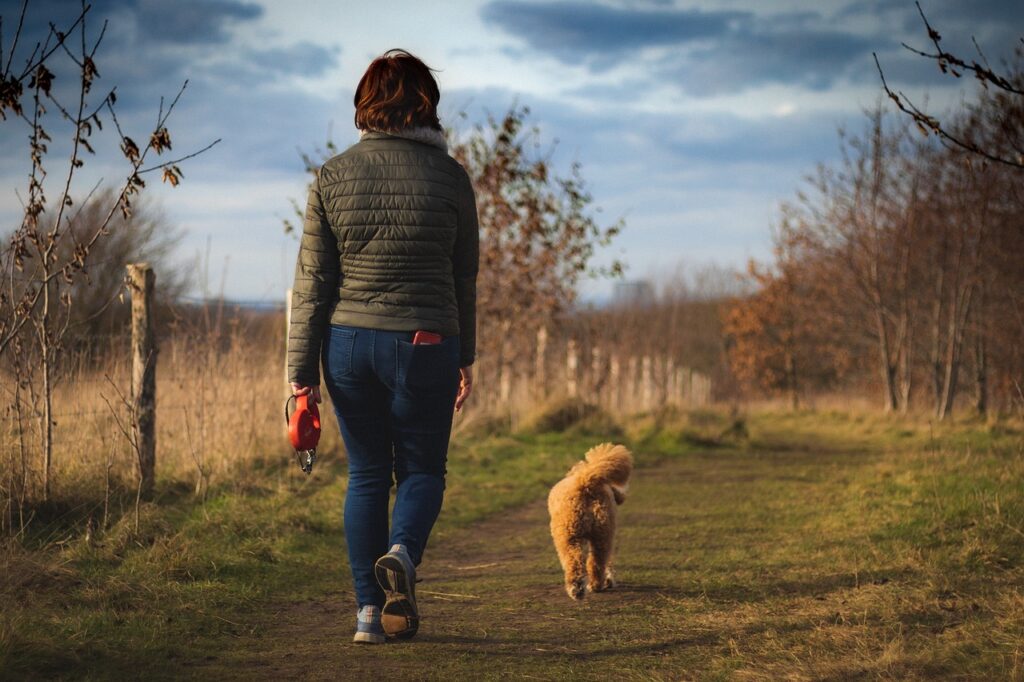As dawn breaks, imagine your dog sprinting through the golden hues of the morning, breathing in the crisp air with unbridled joy and freedom. But this isn’t just a carefree frolic; it’s a display of discipline, trust, and the result of diligent off leash K9 training. Indeed, it’s a rewarding journey for both you and your canine companion, one that helps forge an unshakeable bond and unravels the unique potential within your dog.
So, what exactly does off leash K9 training entail, and why is it so important?
Table of Contents
Understanding Your Dog
Before diving headlong into training, we must swim in the waters of understanding – understanding your dog’s behavior and psychology. Each dog is a unique blend of personality traits, driven by instincts handed down from their wild ancestors. A Labrador may be more inclined to retrieve, a Border Collie to herd, and a Beagle to follow scents.

Knowing your dog’s breed-specific traits provides invaluable insight into their training progress and adaptability.
Prerequisites for Off Leash Training
Off leash training is like a dance that takes two. It’s not just about your dog learning new tricks; it’s also about you understanding your furry friend’s instincts and capabilities. Before you step onto the dance floor of off leash freedom, make sure you’ve got these pre-steps down pat.
-
- The Doggy Basics: It’s all about the fundamentals! Your canine companion needs to be firm on the basic commands, such as “Sit,” “Stay,” “Come,” and “Leave it.” Think of these as the safety brakes. They’re essential and can prevent a whole lot of chaos and, sometimes, even disaster.
- The Trust Game: Your dog trusting you, and you trusting your dog, is the key to successful off-leash training. This trust isn’t built overnight. You’ve got to earn it, and that comes from spending quality time with your dog, being consistent, and patient during training.
- Leader of The Pack: Dogs follow a pack mentality. In your home, that leader has to be you. Not a dictator, but a leader who guides with firmness and fairness. It’s all about setting boundaries and sticking to them.
- Social Butterfly: Before going off leash, your dog needs to be exposed to various environments and social situations. This will help your dog to behave correctly in different scenarios and stay calm under new experiences.
- Recall Training: Imagine this: Your dog is off leash, and suddenly, they spot a squirrel. Will they ignore your call and chase the squirrel, or will they come running back to you? That’s where recall training comes into play. Your dog should be able to come back to you, no matter the distraction.
- Health Check: Lastly, a trip to the vet is in order. Make sure your dog is in good physical condition to handle the challenges and excitement of off-leash training.
Remember, each dog is unique and will progress at their own pace. Your patience, consistency, and understanding are vital components in this training journey. After all, the freedom and bond that off-leash training fosters is well worth the effort.
Safety Considerations
Letting your dog off leash comes with its fair share of risks. Here are a few things to keep in mind to keep your dog safe:
- Pick the Right Spot: Always begin in a secure and safe environment. This could be your backyard or a quiet park. As your dog becomes more comfortable and reliable, you can slowly introduce them to new environments.
- Be a Mindful Guardian: When your dog is off leash, you’ve got to be the eyes and ears for them. This includes being aware of your surroundings and any potential threats, such as traffic, aggressive animals, or even dog leash laws in your area.
- Gear Up: Even if your dog is off leash, having the right equipment, like a long training leash or a harness, can give you better control during the early stages of training.
- Plan for Emergencies: Train your dog to respond to an emergency recall command. This command is like the red alert, to be used only in emergency situations.
- Know Your Dog: Understand your dog’s behavior. If they get aggressive, scared, or overly excited easily, it might be too soon for off-leash training.
- Visible and Traceable: Make sure your dog is visible and easy to identify. Bright colored harnesses and ID tags can come in handy here.
- Health Precautions: Make sure your dog is up-to-date on all vaccinations and preventatives. A check-up with your vet is always a good idea before starting off-leash training.
- Ready, Set, Train!: Finally, ensure your dog is ready to be trained. They should be comfortable and reliable with basic commands before you consider off-leash training.
When it comes to off-leash training, safety must never be compromised. Always consider your dog’s safety and the safety of others in the environment.
Steps to Off Leash K9 Training
Training your dog to roam free without a leash can feel like a Herculean task. But with patience, consistency, and these simple steps, you’ll have a confident, happy, and safe off-leash pup in no time:
- Start With the Basics: The basics aren’t just for show. Commands like “Sit,” “Stay,” “Come,” and “Leave it” are the safety nets you need to ensure your dog can handle being off leash.
- Leash Before You Unleash: Begin your training with a leash. A familiar, distraction-free environment will help them focus better.
- Long Leash Training: Once they’ve mastered the short leash, introduce them to a long leash. This gives them a taste of freedom, while still allowing you some control.
- Recall Training: Reinforce the “Come” command on the long leash. Start close and gradually increase the distance. Remember, high-value treats or toys are great rewards.
- Introduce Distractions: Once they’ve got the recall command down, start adding distractions. This could be anything from people, other dogs, or interesting smells.
- Test the Waters: Once they’re responding well to commands amidst distractions, let them off leash in a safe, controlled environment.
- Increase Freedom Gradually: Don’t go from zero to a hundred instantly. Gradually give them more freedom, but be ready to intervene if they don’t respond to your commands.
- Consistency is Key: Like any training, practice makes perfect. Keep the training sessions regular, short, and fun.
- Praise Their Progress: Remember to reinforce positive behavior with rewards. This can be treats, verbal praise, or their favorite toy.
- Safety First: If you feel they’re not ready for a certain step, don’t rush. Take a step back and practice more before moving forward. Their safety is your top priority.
Training a dog to be off leash takes time and dedication, but the freedom and confidence it brings to your dog make it a worthy endeavor.
Common Challenges and Solutions
Like any worthwhile pursuit, you may face a few hurdles along the way. Distractions are a common challenge in off leash training. Your dog might be more interested in chasing a squirrel or sniffing a bush than listening to your commands. In such cases, consider using higher-value rewards or changing your training environment.
The Role of Professional Trainers
Although most owners can teach off leash training, there might be instances when professional help is necessary, especially if your dog is reactive, aggressive, or simply not responding to your attempts at training. Professional trainers have the experience and skills to address specific issues and can provide a structured training plan for your dog.
Maintaining the Training
Once your dog is confidently responding to commands off leash, it’s essential to maintain the training. Consistent practice and varied environments help reinforce learned behaviors. Continued socialization with other dogs and people will also aid in keeping your dog’s training sharp and reliable.
Conclusion
Off leash K9 training isn’t merely about having your dog follow commands; it’s about fostering a deep bond, built on mutual respect and understanding. It’s a journey filled with hurdles, triumphs, and precious moments that you and your furry friend will cherish.
As you embark on this journey, remember the age-old saying, “Patience is a virtue”. Your dedication and consistent efforts will undoubtedly yield an obedient, confident, and happy off-leash companion.
So, are you ready to venture into this rewarding journey of off-leash K9 training?


Dennis and Becca, have always shared a passion for man’s best friend. As dog enthusiasts, they put together articles that inform, engage, and captivate fellow dog lovers.